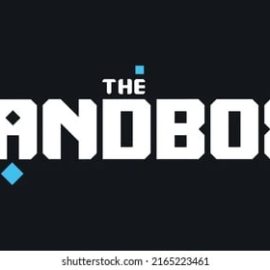- Aenean bibendum tempor lectus
- Vestibulum ultricies
- Nunc consectetur urna quis elit
- Aenean bibendum tempor lectus
- Vestibulum ultricies
- Nunc consectetur urna quis elit
| General | Social Media | Technical | Cookies | ||||
|---|---|---|---|---|---|---|---|
| Founder | Layer 2 | Coockies | |||||
| Location | Discord | Web | Contact Info | ||||
| No. Coins | Youtube | Mobile | Identifier | ||||
| Fees | Hedgies | Age Limit | |||||
| Leverage | Quora | Merch | ID Verify | ||||
Sandbox Review
What is The Sandbox?
The Sandbox is a virtual metaverse that houses a plethora of decentralized land parcels that users can develop, trade, and monetize their virtual real estate using a variety of monetary means. One of the few openly accessible live blockchain metaverses is called The Sandbox. The Sandbox was initially launched as a game-builder simulator on Steam before being built on the Ethereum blockchain. Later in 2018, Animoca Brands, a major player in the blockchain sector, acquired the brand, transferred it to the blockchain, and created a massive metaverse where users could take advantage of the emerging technology to create virtual currency. The Sandbox quickly gained popularity thanks to its outstanding in-game features that allowed players with similar interests to collaborate on exciting products and monetize them through tokenization. The metaverse economy is based on $SAND, the utility and governance token within the metaverse used to trade goods on the Sandbox market. Additionally, the land parcels owned by the users enable the users to curate the virtual land as they see fit. People could create different types of games and distribute them on their own land plots to appeal to both crypto and non-crypto players, which is an excellent look since non-crypto enthusiasts have been hesitant to try the metaverse.
What are the pros and cons of The Sandbox?
Since the Web3 interface is still in its early stages of development and the Sandbox is still in its infancy, the metaverse has a long road ahead of it. While cryptocurrencies are mature enough to form a sustainable economy, there are issues affecting blockchain technology and preventing it from reaching new heights of success. Similarly, there are a few offerings from The Sandbox which leave its competitors in disarray but, at the same time, there are a few downsides of the metaverse as well which may have a negative impact on the user experiencing the metaverse for the very first time.
Advantages
One of The Sandbox’s biggest benefits is that it has a decentralized system of governance. SAND owners can set the rules and manage the metaverse through decentralized autonomous organizations (DAOs), which is one of The Sandbox’s biggest advantages. Users will self-govern the metaverse and have full control over their digital assets; there is no centralized authority that could influence the policies. All the non-fungible assets (NFTs) minted or owned by a user will have complete digital ownership over all their virtual assets. These assets can be staked on land or used to make P2E games, as well as traded on the Sandbox market for a profit. Additionally, The Sandbox gives its users a lucrative way to make money. Within the metaverse, there are a number of play-to-earn (P2E) features that let anyone participate in gameplay and win lucrative rewards. Similar to this, since the assets produced within the metaverse are completely owned by the users, trading them is another fruitful way to make money. Another important aspect of The Sandbox is the support for cross-platform interoperability, which allows users to use blockchain technology to use their resources in other applications based on the blockchain system.
Disadvantages
Despite appearing to be a sustainable environment, the Sandbox is still in its early stages, where the economy isn’t stable, and the SAND token hasn’t yet realized its full potential. The metaverse’s economy hasn’t fully developed despite well-known figures like Snoop Dogg teaming up with The Sandbox. Similar to the metaverse, which is still developing, there are numerous management and development problems. First, the roadmap suggests that the full implementation of the Metaverse will take another few years, and by then the Metaverse would be considered in beta. Secondly, for the metaverse to work under the DAO structure, the metaverse will require time to mature before it can be handed off to the users. And since many tokens were sold in private auctions and sales, there’s a chance that a specified group of people will be influencing the policies made using the DAOs since the SAND token holders have a greater say in the voting process.
What is special about The Sandbox?
The advanced process of tokenizing game assets and allowing users to use the assets as they see fit is one of the most important aspects of The Sandbox metaverse. Peer-to-peer trading is promoted, which increases the opportunities for profit, and players are encouraged to participate in the ecosystem. This contrasts with a centralized system of governance. Furthermore, The Sandbox’s distinctive gameplay contributes to its popularity with fans. Both gamers who use cryptocurrency and those who don’t are drawn in by the beautiful environment and rewarding gameplay. And since the project is backed by famous celebrities, non-enthusiasts are also attracted to the metaverse.
SAND
SAND, an ERC-20 token that acts as the fungible token within the economy, is the main utility token used within The Sandbox ecosystem. SAND tokens are needed by players for both governance and trading on the native market. Holders of SAND have the ability to sway the results of votes cast within the DAO structure, giving them the final say on game-related issues. Additionally, players use SAND tokens to cover the gas costs associated with uploading their 3D assets to the native market. SAND tokens have a limited supply of 3 billion with 30% of the tokens already in circulation. When the project is finished and prepared for mainstream adoption, players can use well-known DEXs like Binance to buy SAND tokens and later reap the benefits.
Final words
In a short time, The Sandbox has become the most popular metaverse in the blockchain space. Millions of people have invested their time and money in this NFT-based project and the early investors have reaped the rewards of their timely investments. In addition to drawing crypto enthusiasts, The Sandbox also appeals to casual gamers. The Sandbox is most likely to be worth millions within the next couple of years, despite the fact that the metaverse is currently plagued by a few significant problems like high gas prices and the flimsy structure of decentralized governance.

